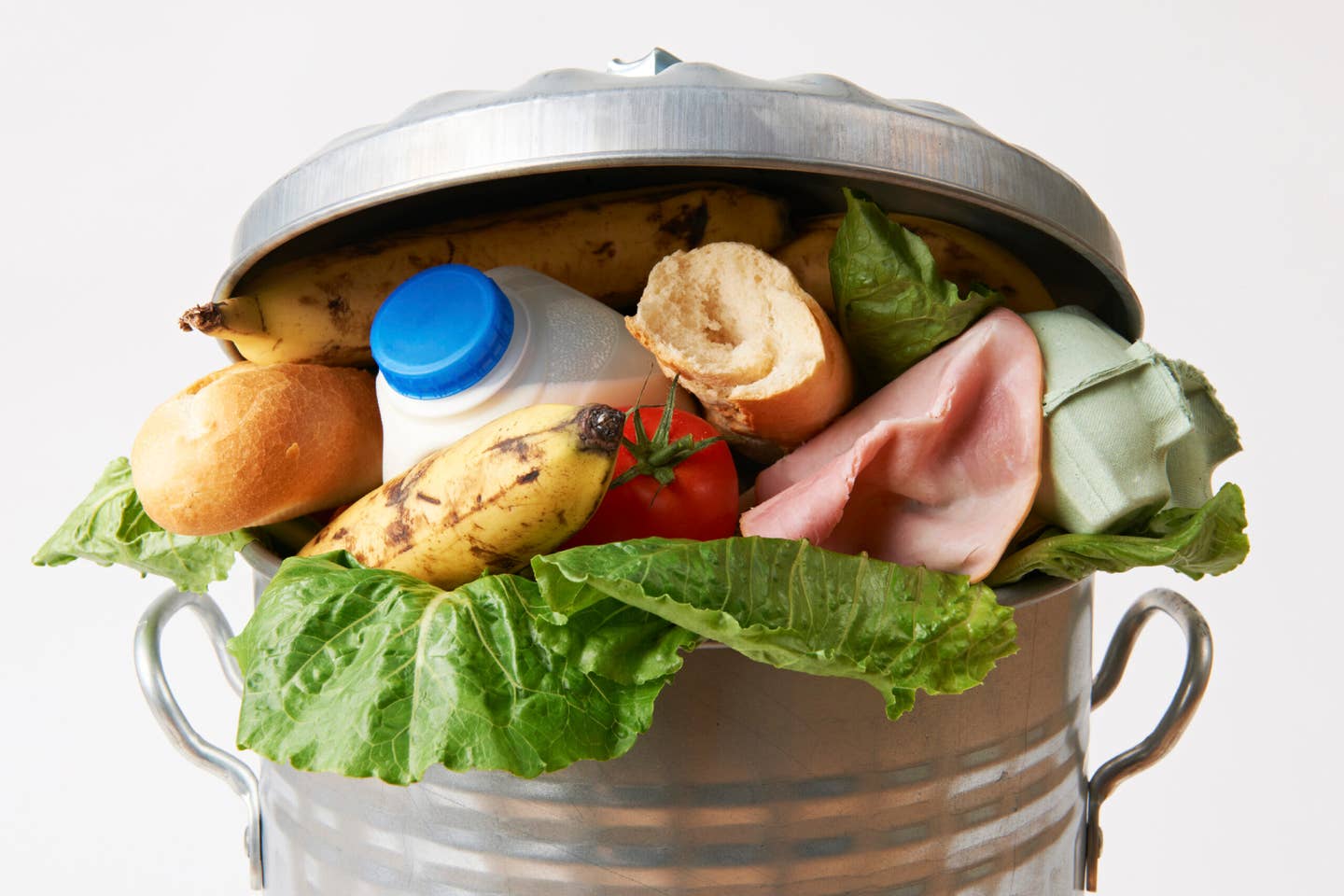
Inside New York City’s Brilliant Idea to Transform Food Waste into Clean Energy
Remember to always recycle your paper, plastic, and….food?
You may soon be able to recycle an apple in the Big Apple, thanks to New York City's ambitious multimillion-dollar campaign to curb greenhouse gas emissions, reduce the amount of food waste deposited in landfills, and create new clean energy. According to the New York Times, these efforts to tackle the city's 14 million tons of waste—an amount that costs an annual $400 million to ship to mostly out-of-state incinerators and landfills, and that's only from the public sector—began in 2013 under former Mayor Michael Bloomberg, who called food waste the "final recycling frontier," and has since continued under Mayor Bill de Blasio.
The latest expansion of the city's sustainability initiative is, simply, a residential organics collection service that will place brown bins for organic waste beside the existing blue and green for non-organic recyclables. The program is already available for over a million New Yorkers, making it the largest in the country, but by next year, every resident in the five boroughs will have access to this curbside service, an unprecedented scale in America. As the Times points out, there are existing programs in the likes of Portland, San Francisco, and Seattle, "but the population of those three places combined is smaller than Brooklyn or Queens alone."
Anyone who’s ever lived, or even visited, New York City can imagine the logistical nightmare of adding yet another collection route (hello, traffic gridlock), so the city is simply modifying the existing routes and introducing trucks with a separate compartment for organics. For those in more densely populated areas that won’t be reached by the service for a while, there will be drop-off sites new subway stations and bin-sharing partnerships with businesses that are willing to participate.
Once collected, the discarded food will be sent to one of the city’s composting sites—the notorious Rikers Island jail complex and the Fresh Kills landfill along the banks of Staten Island—or private composting facilities in the area. There, it’ll have to be processed to ensure non-biodegradable materials are separated from the mix per guidelines from the Sanitation Department. The main challenge here? Getting businesses in the private sector, which will handle the bulk of the waste, to get on board with enhancing their infrastructure to accommodate more food scraps without a guaranteed supply of that material.
The other intended use for organics is the production of a fuel sourced called biogas. Anaerobic digestion facilities use a mix of microorganisms to break down organics, which are then heated and refined to create a natural energy source that can be applied in a natural gas pipeline or as car fuel. As opposed to composting fields, the facilities used to digest organics are much smaller. On the downside, they require a much heftier initial spend. New York’s testing program, which began in 2012, is adapting water treatment facilities for this purpose, rather than build new facilities. By next year, it’s expected that a small group of customers of the utility National Grid will using gas created via this process at Brooklyn’s Newtown Wastewater Treatment Plant.
In the next year, New York will see $27.7 million poured into distribution of bins, collection of materials, and education for residents, whose participation will be essential component for bringing down the cost of the project. While it’s still voluntary for residents, restaurants, hotels, stadiums, and food manufacturers are already required by law to separate organic waste.
The city's new, do-good initiatives come at a time when food waste, and the climate change that results from it, is at the forefront of political conversation—the United States has recently joined Syria and Nicaragua as the only three countries on the "no" list for the Paris climate accord, and Nicaragua didn't sign on because government officials felt the accord didn't go far enough.
In this country, we also waste forty percent of all food intended for human consumption, which is not only ethically unsound given the fact that one in eight Americans struggles to put food on the table, but also financially irresponsible: a new study by the World Resource Institute found that for every $1 invested in reducing food waste, an average of $14 was saved in the long run. But it's more clear than ever before that as with winning elections, enacting environmental improvements require participation, support, and legislation on the city and local level as much as the federal, which is what makes the city's initiative so commendable.
h/t New York Times
Keep Reading
Continue to Next Story










